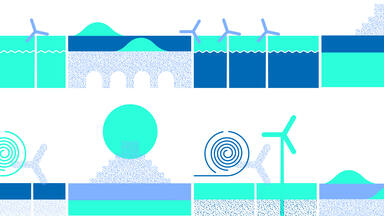Identification of rights-holders and other stakeholders
Identifying rights-holders and other stakeholders is a key activity to better understand the relationship between communities and individuals with a property. The identification of rights-holders and other stakeholders is fundamental for the effective management and conservation of World Heritage properties and for the development of a participated and inclusive impact assessment process.
It is fundamental to understand the connections stakeholders have to a heritage site, and to also grasp the relationships and dynamics between different rights-holders and stakeholder-groups to ensure the establishment of adequate means of empowerment, engagement and/or consultation.
The identification of rights-holders and other stakeholders consists of addressing two sets of questions, one in relation to the property and a second one in relation to the proposed wind energy project:
1) Identify rights-holders and other stakeholders in relation to a World Heritage property:
- Who are the people, and which are the communities, institutions and groups that have rights and/or other interest in the World Heritage property?
- What is their role in relation to the property and which dynamics could be identified in relation to them that have relevance to the property?
- Who are potential beneficiaries in relation to the World Heritage property?
- Who has decision-making power and who can influence decision-making?
2) Identify stakeholders in relation to the proposed wind energy project:
- Who are the people, and which are the communities, institutions and groups that have an interest in the proposed wind energy project?
- What is their role in relation to the proposed project?
- Who are the potential beneficiaries from the wind energy project?
- Who has decision-making power and who can influence decision-making?
- Who might be negatively or positively impacted by the wind energy project?
This information can later be translated into a stakeholder overview, be it a simple table, map, or a more complex visualization (mind-map, Venn diagram, stakeholder circle, design thinking method, etc.), which must then be analysed to decide the appropriate ways of working with individuals and groups at each stage of the impact assessment.
Engagement tools
The listed (non-exhaustive) tools for consultation and engagement with local communities, right-holders and other stakeholders are meant to provide inspiration for the processes related to impact assessments for wind energy projects but are also useful for developing and implementing the protection and management needs of World Heritage properties. Please note that some methods are more informative while others strive for active participations, the identification of the right method must be based on the individual rights-holder/stakeholder and the phase in the assessment.
Offline engagement:
- Focus groups and workshops;
- Outreach and awareness raising events;
- Questionnaires, surveys and opinion research;
- Individual or group interviews;
- Live laboratories;
- Comment walls placed in public spaces;
- Media outreach;
- Ethnographical studies;
Online engagement:
- Digital platforms and spaces created to share information and project documents;
- Online questionnaires, surveys and opinion research;
- Interviews (by email or telephone);
- Virtual interactive maps where rights-holders and stakeholders can drop pins, comment and actively interact with the map;
- Virtual whiteboard where people can post comments;
- Online workshops, meetings and videoconferences;
- Virtual polls;
- 3D virtual engagement environments (plans, visualizations, etc);
- Media outreach;
